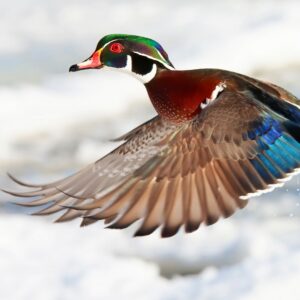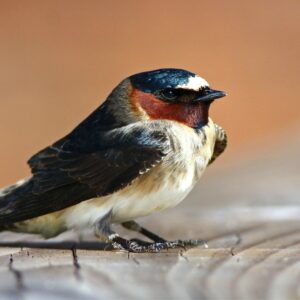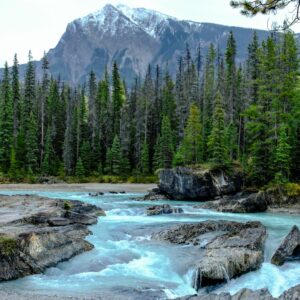The Story Behind this Alberta Lake’s Frozen Bubbles—and What they Say About Our Changing Planet
There may not be many sights that lure you out of bed before sunrise in the middle of winter—but Abraham Lake should be one of them.
Located three and a half hours from Calgary or Edmonton, the man-made Albertan waterbody has become internet-famous thanks to a natural sensation that happens beneath its frozen surface. It starts when bacteria feed on decaying plants and animals that have collected along the lake bottom. That process releases methane gas in the form of thousands of bubbles. Floating to the water’s surface, the bubbles remain trapped in frozen, suspended stacks until spring thaw. The resulting scene looks like nature’s lava lamp.
Contrasted against the Rocky Mountain backdrop, it’s easy to see why Abraham Lake is a destination for photographers!
Its turquoise-coloured waters further the appeal. Like the bubbles, there’s a scientific explanation for the lake’s milky blue hue. Similar to other lakes in the area, Abraham Lake is filled with fine-grained glacial silt that has been deposited from the surrounding glaciers. That mineral content is what gives the water its vivid colour.
Methane Bubbles and Climate Change
But while those funky bubbles may be a shutterbug’s delight, it would actually be better for the environment if they remained frozen year-round. When Abraham Lake thaws each spring, the bubbles release a burst of methane gas into the air.
Not visible to the naked eye, all it takes is lighting a match near a newly popped bubble to see methane release in action! While it makes for a cool science experiment, methane is no joke. As a greenhouse gas, methane molecules are up to 30x more potent than carbon dioxide. Once in the atmosphere, methane contributes to global warming by capturing and holding on to heat.
This wouldn’t be an issue if Abraham Lake was the only place with methane bubbles. In reality, these bubbles are common in thousands of northern lakes, from Alberta to Alaska, Siberia to Scandinavia. The greatest concentration of bubbles, however, is likely found in the Far North—suspended for centuries beneath Arctic ice.
You’ve probably heard that the Earth’s temperature is rising. Warming temperatures speed up the thawing of permafrost and increase the likelihood that icy surfaces could release popping bubbles of methane into the atmosphere.
There’s no debate around Abraham Lake’s beauty. An excellent winter destination, especially for avid photographers, the lake also offers a chance to reflect on our changing planet and our responsibility to protect it.



